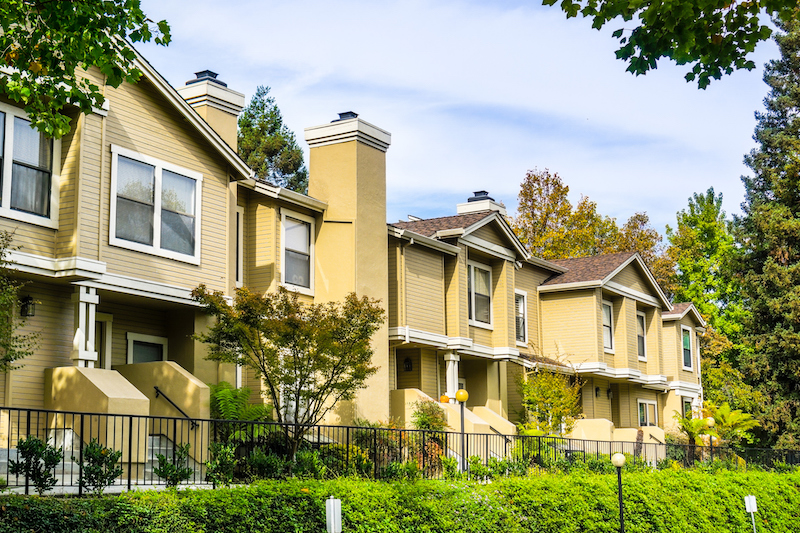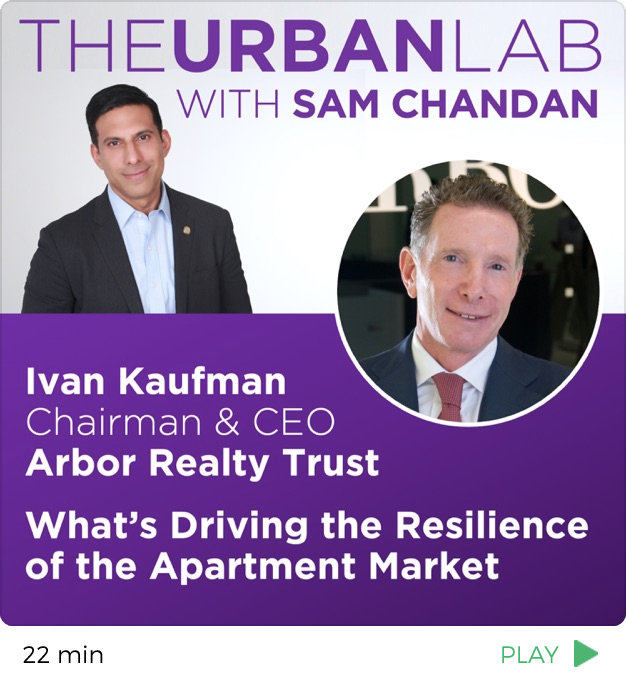Podcast: The Strength of Multifamily—Despite COVID-19

Arbor Realty Trust Chairman and CEO Ivan Kaufman shares his multifamily insights, as the featured speaker on The Urban Lab. The podcast is hosted by Sam Chandan, the Silverstein chair at NYU’s Schack Institute of Real Estate. This article provides highlights of their discussion, which underscores the strength of multifamily, despite COVID-19. In the audio box below, you can listen to the complete episode titled, “What’s Driving the Resilience of the Apartment Market.”
Renters’ Resilience During the COVID-19 Crisis
Declared a national emergency on March 13, COVID-19 has continued to cause health and economic hardships. Yet approximately 90.8% of apartment households paid rent as of May 20, according to the National Multifamily Housing Council. In April, the rate of rental payments was comparable to 2019. The rent payments in both months occurred during periods of historically high unemployment.
Kaufman explained this phenomenon, describing the growing psychological sense of the home being one’s castle. Stay-at-home restrictions have curtailed people’s activities. He commented on how people are not going to their offices, restaurants, ballgames or even their friends’ houses. “They’re living and working in their homes with their families,” said Kaufman. “So, to the extent that they have the capability, they want to protect the one place where they’re spending all their time.”
He pointed out that government programs, including unemployment insurance, have provided people with the ability to pay rent. Plus, while staying home, people have reduced their discretionary spending.
Bullish on Multifamily
Predicting multifamily rents will flatten or slightly decline, Kaufman also expects a marginal dip in occupancies. Nonetheless, he maintained that investor demand will remain strong.
“We think the fundamentals are extraordinary, coupled with the fact that interest rates are at significantly lower levels than they were a year ago,” he said. “The values will hold up very well.” By comparison, the virus has taken a far more brutal toll on other asset classes.
Opportunities in Refinancing and Bridge
According to Kaufman, with the coronavirus threat, Fannie Mae, Freddie Mac and the FHA continue to ensure ample liquidity. As a result, he characterized the multifamily market as active, vibrant, steady and extremely active in refinancing.
New construction loans have slowed industry-wide. However, Kaufman sees many opportunities to refinance existing construction loans. He commented that traditional, transitional loans can be more difficult. “We’re one of the only lenders in the market who is still very active,” said Kaufman.
Arbor’s bridge loans include properties coming off construction loans, in lease-up, or encountering slight losses in occupancy, thus ineligible for agency loans. Many of the bridge loans will ultimately become agency loans.
Forbearance Means Deferral Not Non-Payment
The CARES Act includes mortgage forbearance of federally backed or owned loans. However, Kaufman clarified a common misunderstanding about the law. Forbearance never meant an option to permanently opt out of making mortgage payments. It grants a deferral, with an accrual of amounts to be paid back at a future date or spread out with payments to be made over an extended schedule.
Forbearance should apply only in appropriate circumstances. Kaufman provided an example. When rent collections are only 2% to 4% less than their historical rates, borrowers should not request forbearance or assistance. However, in certain situations, where the pandemic has hit hard the local economy, reducing occupancies, Arbor has assisted borrowers.
The Arbor Rental Assistance Program (ARAP)
Arbor has created a $2 million rental assistance program to provide interest-free advances to thousands of tenants who have suffered from COVID-19 losses. Arbor is contributing $1 million to the program and participating borrowers will match Arbor’s advances to its tenants in need through June. The Arbor Rental Assistance Program (ARAP) uses private capital to supplement government rent relief programs.
If followed as a model by other lenders and their borrowers on a large scale, ARAP could have a national impact. Kaufman explained if renters fail to make their payments, borrowers cannot pay their lenders. The lenders could then experience securitization or capital issues, and fail to make their payments. This would disrupt the securities market. It would interfere with the availability of financing, which could ultimately negatively impact real estate values.
With appropriate financial assistance, “the system returns to normal and starts to function and liquidity comes back,” said Kaufman.
In the podcast, Kaufman also reviews topics such as the prospects of a national rental assistance fund, the status of small multifamily loans, single-family rentals and more. To listen to the full interview on the Urban Lab podcast, click here.
Contact Arbor to learn more about the full array of Arbor’s multifamily financing solutions.


